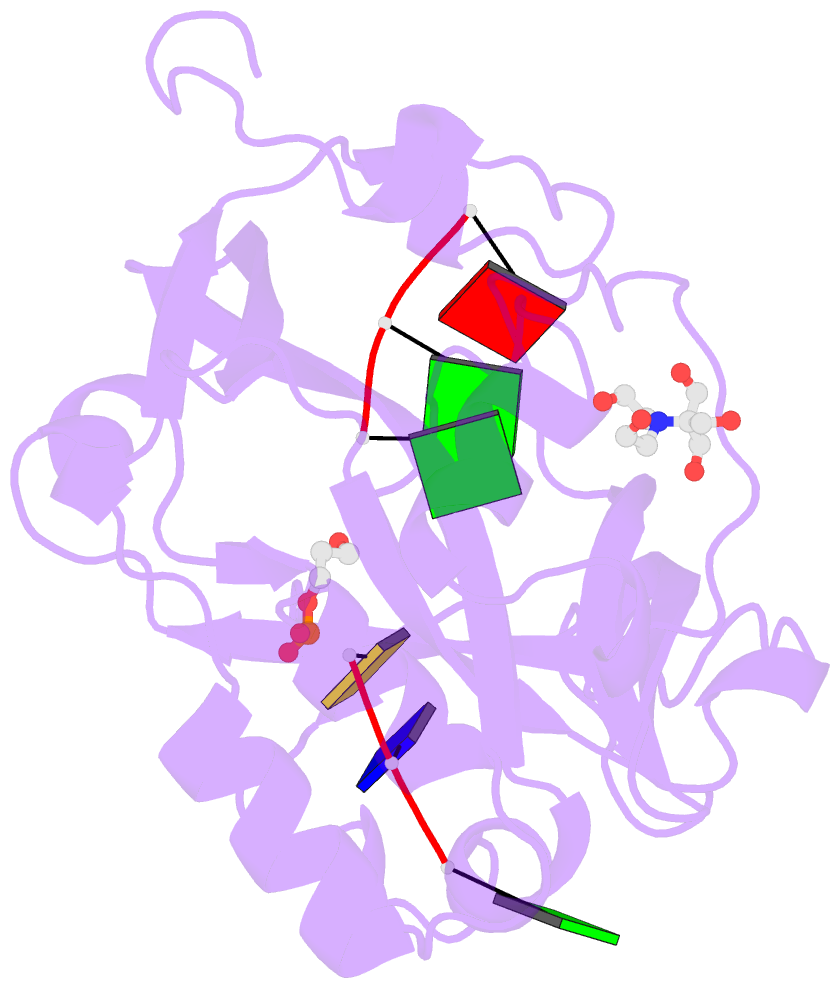Summary information and primary citation
- PDB-id
- 6nuh; SNAP-derived features in text and JSON formats;
DNAproDB
- Class
- DNA binding protein-DNA
- Method
- X-ray (1.594 Å)
- Summary
- Non-covalent DNA-protein complex between e. coli yedk and ssDNA containing an abasic site analog
- Reference
- Thompson PS, Amidon KM, Mohni KN, Cortez D, Eichman BF (2019): "Protection of abasic sites during DNA replication by a stable thiazolidine protein-DNA cross-link." Nat.Struct.Mol.Biol., 26, 613-618. doi: 10.1038/s41594-019-0255-5.
- Abstract
- Abasic (AP) sites are one of the most common DNA lesions that block replicative polymerases. 5-hydroxymethylcytosine binding, embryonic stem cell-specific protein (HMCES) recognizes and processes these lesions in the context of single-stranded DNA (ssDNA). A HMCES DNA-protein cross-link (DPC) intermediate is thought to shield the AP site from endonucleases and error-prone polymerases. The highly evolutionarily conserved SOS-response associated peptidase (SRAP) domain of HMCES and its Escherichia coli ortholog YedK mediate lesion recognition. Here we uncover the basis of AP site protection by SRAP domains from a crystal structure of the YedK DPC. YedK forms a stable thiazolidine linkage between a ring-opened AP site and the α-amino and sulfhydryl substituents of its amino-terminal cysteine residue. The thiazolidine linkage explains the remarkable stability of the HMCES DPC, its resistance to strand cleavage and the proteolysis requirement for resolution. Furthermore, its structure reveals that HMCES has specificity for AP sites in ssDNA at junctions found when replicative polymerases encounter the AP lesion.





